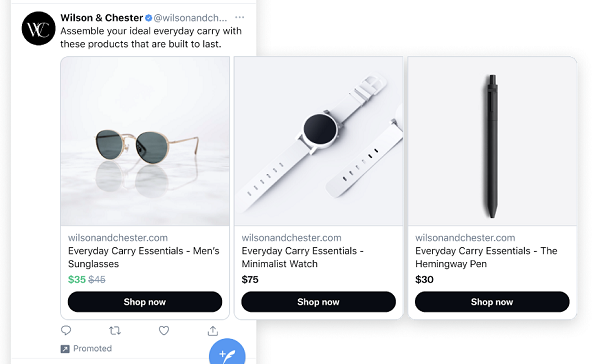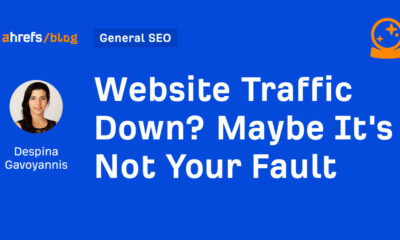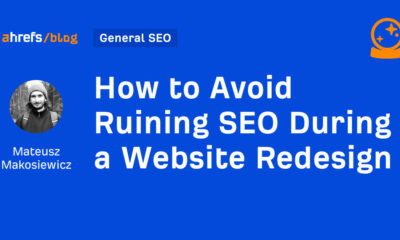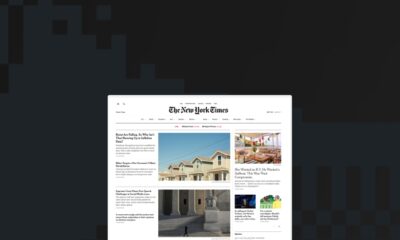SOCIAL
Twitter Launches New Ad Targeting Options, Including Advanced Website Conversion Optimization

Wait, Twitter’s still launching ad updates, despite losing thousands of staff?
Well, kind of.
So, just before Thanksgiving, Twitter announced some new ad targeting options, which look fairly similar to its existing ad goals, but with some important differences.
The first update is within its ‘Conversions’ objective, with advertisers now able to focus their promotions onto users that are more likely to take specific actions in response.
As per Twitter:
“Website Conversions Optimization (WCO) is a major rebuild of our conversion goal that will improve the way advertisers reach customers who are most likely to convert on a lower-funnel website action (e.g. add-to-cart, purchase).”
So instead of just aiming to reach people who are likely to tap on your ad, you can expand that focus to reach users that are more likely to take next-step actions beyond that, like:
- Add-to-cart
- Purchase
- Register contact info
- Subscribe
“Our user-level algorithms will then target with greater relevance, reaching people most likely to meet your specific goal – at 25% lower cost-per-conversion on average, per initial testing.”
Essentially, the process uses Pixel tracking (you need to use the Twitter Pixel or Conversion API for this campaign type) to get a measure of the types of people who are undertaking these actions on your website, then utilizes that data for targeting further audiences for your ads, based on each element.
So how is it different?
Well, it’s not a big shift.
Up till now, Twitter advertisers have been able to optimize their campaigns to focus on:
- Link clicks
- Site Visits
- Conversions
Within the ‘Conversions’ objective, you can further optimize for specific website events:
- Page View
- Content View
- Add to Cart
- Purchase
As you can see, the only additions here are users who might leave their contact info or subscribe, which are likely not major focal points for most Twitter advertisers.
But what Twitter has done is that it’s made these options more immediately accessible within the Campaign Objectives screen.
So it looks like a significant update – and functionally, it does simplify things a bit. But it’s not a major advance in your Twitter ad targeting options.
Twitter’s also launched its ‘Dynamic Product Ads’, which enable advertisers ‘to showcase the most relevant product to the right customer at the right time’.
“With DPA Retargeting, you can serve ads to targeted consumers, featuring products they have engaged with (e.g. added to their shopping cart) on your website but haven’t yet purchased.”

Twitter’s actually offered a variation of this ad type since 2016, but it recently updated its Dynamic Products Ads targeting to integrate a more privacy-focused approach, in order to optimize ad performance with potentially fewer signals.
Finally, Twitter’s also launching its updated Collection Ads format, which enables advertisers to share a primary hero image, along with smaller thumbnail images below it.
“The primary image remains static while people can browse through the thumbnails via horizontal scroll. When tapped, each image can drive consumers to a different landing page.”

Twitter first previewed this option back in March.
Essentially, these are not new offerings, as such, but they may be newly available to you, which could provide more considerations for your Twitter ad campaigns.
So if you’re wondering how Twitter’s able to launch new ad products despite cutting 65% of its staff – well, they’re not new, they’ve been in development for months, with Twitter just deciding to press ‘launch’ and provide them to all ad partners.
But that doesn’t lessen their potential value, and there could be various ways in which you’ll be able to use these options to boost your tweet campaigns.
Note, too, that Elon Musk has repeatedly mentioned that he wants to improve the accuracy of Twitter’s ad targeting options, which could eventually see Twitter’s automated audience tools, like Website Conversions Optimization, become a much more valuable proposition.
You can learn more about Twitter’s latest ad updates here.
SOCIAL
Snapchat Explores New Messaging Retention Feature: A Game-Changer or Risky Move?

In a recent announcement, Snapchat revealed a groundbreaking update that challenges its traditional design ethos. The platform is experimenting with an option that allows users to defy the 24-hour auto-delete rule, a feature synonymous with Snapchat’s ephemeral messaging model.
The proposed change aims to introduce a “Never delete” option in messaging retention settings, aligning Snapchat more closely with conventional messaging apps. While this move may blur Snapchat’s distinctive selling point, Snap appears convinced of its necessity.
According to Snap, the decision stems from user feedback and a commitment to innovation based on user needs. The company aims to provide greater flexibility and control over conversations, catering to the preferences of its community.
Currently undergoing trials in select markets, the new feature empowers users to adjust retention settings on a conversation-by-conversation basis. Flexibility remains paramount, with participants able to modify settings within chats and receive in-chat notifications to ensure transparency.
Snapchat underscores that the default auto-delete feature will persist, reinforcing its design philosophy centered on ephemerality. However, with the app gaining traction as a primary messaging platform, the option offers users a means to preserve longer chat histories.
The update marks a pivotal moment for Snapchat, renowned for its disappearing message premise, especially popular among younger demographics. Retaining this focus has been pivotal to Snapchat’s identity, but the shift suggests a broader strategy aimed at diversifying its user base.
This strategy may appeal particularly to older demographics, potentially extending Snapchat’s relevance as users age. By emulating features of conventional messaging platforms, Snapchat seeks to enhance its appeal and broaden its reach.
Yet, the introduction of message retention poses questions about Snapchat’s uniqueness. While addressing user demands, the risk of diluting Snapchat’s distinctiveness looms large.
As Snapchat ventures into uncharted territory, the outcome of this experiment remains uncertain. Will message retention propel Snapchat to new heights, or will it compromise the platform’s uniqueness?
Only time will tell.
SOCIAL
Catering to specific audience boosts your business, says accountant turned coach

While it is tempting to try to appeal to a broad audience, the founder of alcohol-free coaching service Just the Tonic, Sandra Parker, believes the best thing you can do for your business is focus on your niche. Here’s how she did just that.
When running a business, reaching out to as many clients as possible can be tempting. But it also risks making your marketing “too generic,” warns Sandra Parker, the founder of Just The Tonic Coaching.
“From the very start of my business, I knew exactly who I could help and who I couldn’t,” Parker told My Biggest Lessons.
Parker struggled with alcohol dependence as a young professional. Today, her business targets high-achieving individuals who face challenges similar to those she had early in her career.
“I understand their frustrations, I understand their fears, and I understand their coping mechanisms and the stories they’re telling themselves,” Parker said. “Because of that, I’m able to market very effectively, to speak in a language that they understand, and am able to reach them.”Â
“I believe that it’s really important that you know exactly who your customer or your client is, and you target them, and you resist the temptation to make your marketing too generic to try and reach everyone,” she explained.
“If you speak specifically to your target clients, you will reach them, and I believe that’s the way that you’re going to be more successful.
Watch the video for more of Sandra Parker’s biggest lessons.
SOCIAL
Instagram Tests Live-Stream Games to Enhance Engagement

Instagram’s testing out some new options to help spice up your live-streams in the app, with some live broadcasters now able to select a game that they can play with viewers in-stream.
As you can see in these example screens, posted by Ahmed Ghanem, some creators now have the option to play either “This or That”, a question and answer prompt that you can share with your viewers, or “Trivia”, to generate more engagement within your IG live-streams.
That could be a simple way to spark more conversation and interaction, which could then lead into further engagement opportunities from your live audience.
Meta’s been exploring more ways to make live-streaming a bigger consideration for IG creators, with a view to live-streams potentially catching on with more users.
That includes the gradual expansion of its “Stars” live-stream donation program, giving more creators in more regions a means to accept donations from live-stream viewers, while back in December, Instagram also added some new options to make it easier to go live using third-party tools via desktop PCs.
Live streaming has been a major shift in China, where shopping live-streams, in particular, have led to massive opportunities for streaming platforms. They haven’t caught on in the same way in Western regions, but as TikTok and YouTube look to push live-stream adoption, there is still a chance that they will become a much bigger element in future.
Which is why IG is also trying to stay in touch, and add more ways for its creators to engage via streams. Live-stream games is another element within this, which could make this a better community-building, and potentially sales-driving option.
We’ve asked Instagram for more information on this test, and we’ll update this post if/when we hear back.
-

 PPC4 days ago
PPC4 days ago19 Best SEO Tools in 2024 (For Every Use Case)
-

 PPC7 days ago
PPC7 days ago4 New Google Ads Performance Max Updates: What You Need to Know
-

 MARKETING7 days ago
MARKETING7 days agoWill Google Buy HubSpot? | Content Marketing Institute
-
SEARCHENGINES6 days ago
Daily Search Forum Recap: April 16, 2024
-

 SEO6 days ago
SEO6 days agoGoogle Clarifies Vacation Rental Structured Data
-

 MARKETING6 days ago
MARKETING6 days agoStreamlining Processes for Increased Efficiency and Results
-
SEARCHENGINES5 days ago
Daily Search Forum Recap: April 17, 2024
-

 PPC7 days ago
PPC7 days agoHow to Collect & Use Customer Data the Right (& Ethical) Way












You must be logged in to post a comment Login